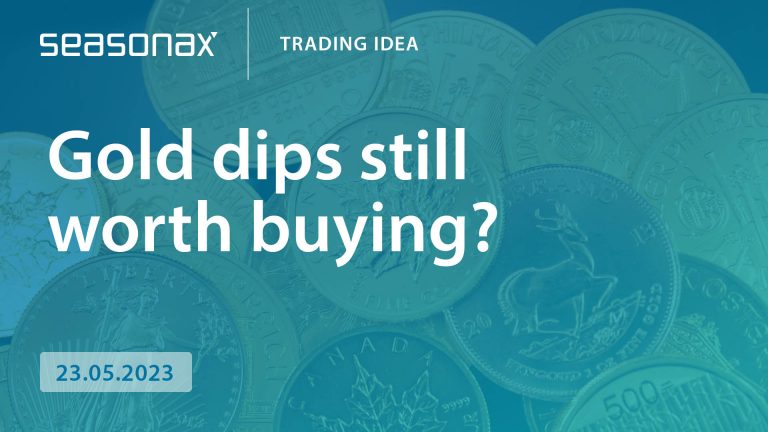Dear Investor,
Four weeks ago we talked to you about gold as an asset class that is fairly resistant to the traditional summer low on the markets. However, by using our application and checking different industries, we are able to find potential investment opportunities all year long. This time, we are going to talk to you about an industry that shows and has shown strong seasonal patterns in July – the pharma and biotech industry. It might be straight-forward to think of seasonal patterns in this industry in winter due to higher demands. But what does the pattern look like in summer and what are its reasons? Let’s take a closer look.
Known drivers of seasonal patterns in pharma and biotech
It might occur to you, that seasonality is a straight-forward principle when it comes to biotech or pharma, since there are times of the year when there is higher demand for certain drugs. For instance, the demand for medication against the common flue typically rises when the temperatures begin to fall in the western hemisphere. Furthermore, the demand for medication against hay fever typically rises in April or May. These trends are more relevant in the U.S. than in Europe, since advertising in pharma is a lot more restricted in the EU. Still, they are relevant in both markets and of high significance for strategic marketing decisions. Recognizing these trends is essential for marketers and there are several studies analyzing the success of pharmaceutical products regarding their time of market entry with regard to seasonal peak sales (Cortjens et al., Bauer & Fischer).
For now, we are going to focus on the month of July and what drives the prices to soar during this time of the year. According to Fischer, Leeflang & Verhoef (2010), high-quality brands achieve peak sales earlier, and are able to sustain these periods of high volume sales longer. The study suggests, that one deciding factor is the publication of clinical studies. These are traditionally published in July and August and besides introducing new products to the market, they generate large amounts of highly effective PR for the biotech and pharma industry. These are the kind of news that get investors excited and cause the stock prices to soar. Let’s look at some hands-on examples!
American corporations exhibit strong seasonal patterns
As mentioned above, American pharma and biotech companies show stronger seasonal patterns since advertising and PR have stronger effects in these markets. With the help of our newly launched web-application we have analyzed several players from the industry. Some of the results were overwhelming with incredibly strong seasonal patterns.
The first stock we identified is Celgene Corporation. Founded in 1980, the company is specialized in the production of drugs against cancer and diseases of the immune system. It has 7,500 employees and yearly earnings of 13 billion USD.

Celgene’s stock exhibits an exceptional annualized return of 151% in the respective time-period.
Source: Seasonax Web App.
The second stock that shows an exceptional seasonal pattern is Amgen. With yearly earnings of 23 billion USD and 18,000 employees, it is the biggest biotech company worldwide.

Amgen’s stock showed only one loss while exhibiting more than 150% of annualized return.
Source: Seasonax Web App
Another stock we have identified is Regeneron Pharmaceuticals. This company is specialized in the production of monoclonal antibodies with yearly earnings of almost 6 billion USD.

Regeneron’s stock shows the highest annual return of the examined sample of companies.
Source: Seasonax Web App
The last stock we identified has also been featured as our Monthly Trading Pick for July. Alexion Pharmaceuticals is specialized in so-called “Orphan-Drugs”, meaning the treatment of rare diseases. It exhibits the most reliable seasonal pattern we could find.

Alexion’s stock showed nothing but winning trades in the respective time-period.
Source: Seasonax Web App
Not just individual success stories
We have given you the theoretical background for the typical soar in stock prices for pharma and biotech and have shown you some very strong seasonal patterns. You might wonder if these are only very successful individual stocks. Therefore, our application gives you the opportunity to analyze indices as well.
We have looked at the NASDAQ Biotechnology Index, to see if there was a general trend in July for biotech and pharma stocks. The index is composed of securities of NASDAQ-listed companies classified as either Biotechnology or Pharmaceuticals.

The index has also performed exceptionally well during July.
Source: Seasonax Web App
As you can see, there seems to be a general trend in Biotech and Pharma during the month of July, which is usually a month that causes a lot of headaches around the global stock markets. The analysis also shows, that this year has been no exception and the stocks we have picked by using our application would have been profitable in 2018 as well.
The article proofs that seasonal analysis and pattern recognition can help you overcome the traditional patterns of stock markets and to be able to obtain cumulative profits the whole year round!
If you are interested in conducting your own seasonal analysis, go to app.seasonax.com and start by analyzing some of our free featured patterns.
As always, there are no guarantees in the market but you can certainly let the probabilities work in your favor!
Literature
Fischer, M., Leeflang, P. S., & Verhoef, P. C. (2010). Drivers of peak sales for pharmaceutical brands. Quantitative Marketing and Economics, 8(4), 429-460.
Bauer, H. H., & Fischer, M. (2000). Product life cycle patterns for pharmaceuticals and their impact on R&D profitability of late mover products. International Business Review, 9(6), 703-725.
Corstjens, M., Demeire, E., & Horowitz, I. (2005). New-product success in the pharmaceutical industry: how many bites at the cherry?. Economics of Innovation and New Technology, 14(4), 319-331.


